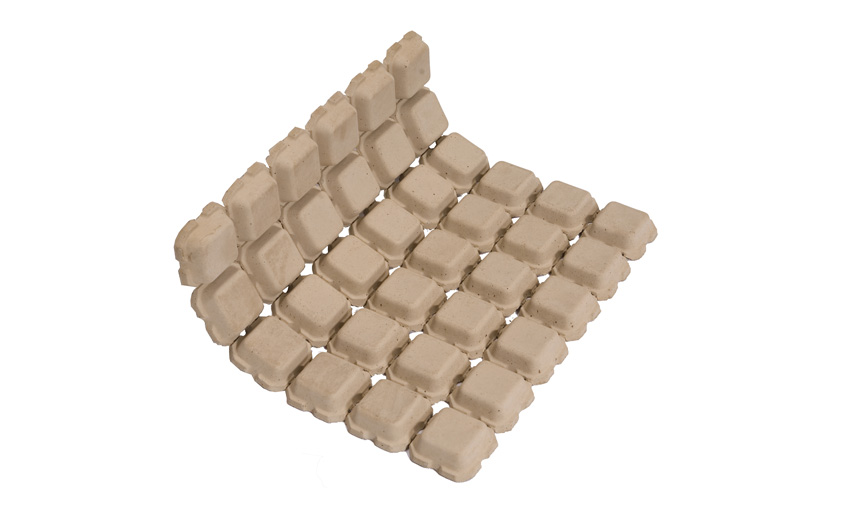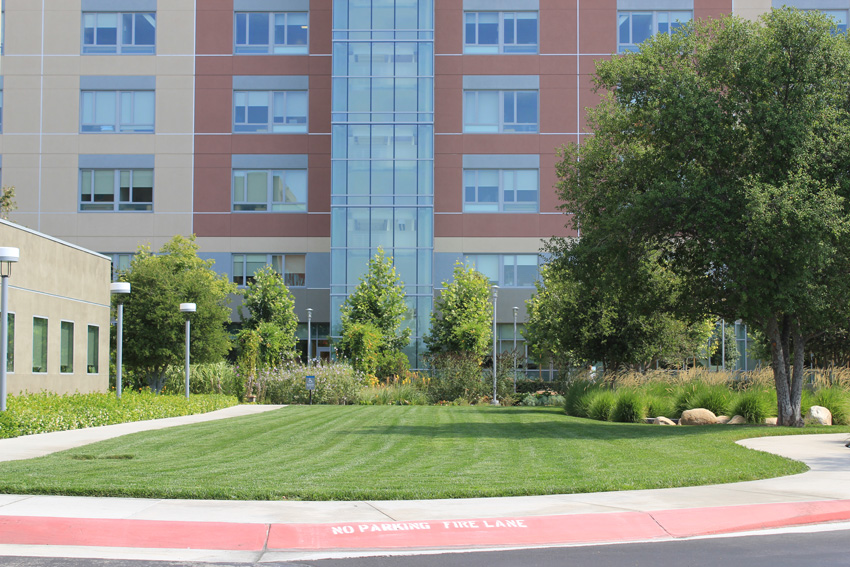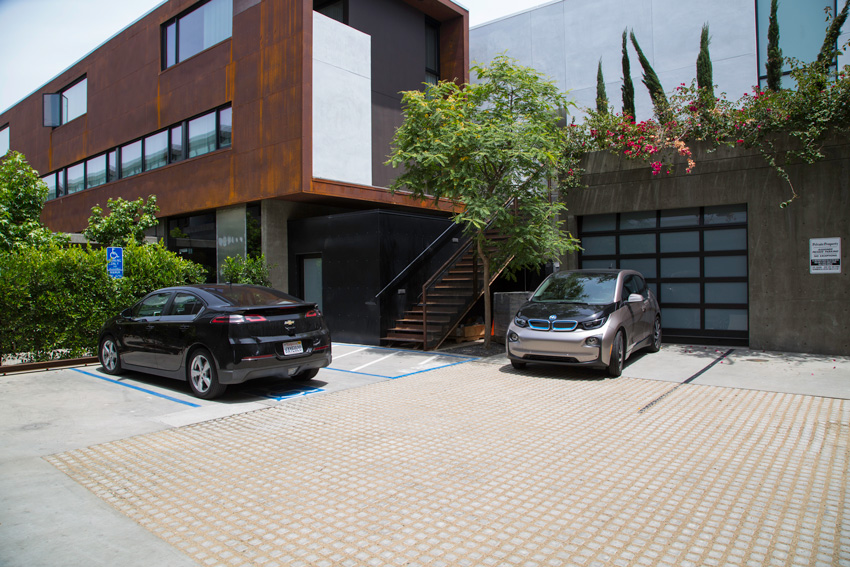Designing for Landscape Architecture
Designing Permeable Landscape Surfaces
The SITES evaluation system places a strong emphasis on providing permeable surfaces in landscape projects. Surface permeability assists in stormwater management and management of on-site precipitation (SITES Water P3.1). Permeable landscape surfaces also allow stormwater to infiltrate through natural soils and replenish groundwater aquifers. Water resources are thus enhanced and restored. Some permeable surfaces can also assist in mitigating heat island effect through the use of pavement types that have a higher solar reflective index (SRI) than asphalt.
Flexible Concrete Mats as Permeable Pavements
One type of permeable surface is a flexible concrete mat, which is a modular and bendable open-grid pavement unit that can be used in a variety of applications. The open-grid system in the mat allows for a variety of material infill options, including:
- Planted options, such as lawn and ground covers
- Unplanted options, such as artificial turf, decomposed granite, sand, and other customized soil infill materials
For high-traffic areas that must meet the requirements of LEED, SITES, or International Green Construction Code (IGCC) criteria, the flexible concrete mat can assist in stormwater management, reduce heat island effect, lower runoff coefficients, assist in on-site water storage and biofiltration, and contribute to groundwater recharge.
Flexible concrete mats provide a permeable, flexible, and in some cases, plantable concrete paving system that is environmentally friendly and is an attractive alternative pavement option to impervious surfaces, such as concrete and asphalt. Flexible concrete mats provide designers with the option to green up an outdoor space by adding vegetation to the interior openings in the mat. The mats can be used in a wide variety of applications, including driveways, parking lots, pathways, drainage channels, swales, and fire lanes.
Flexible Concrete Mats for Stormwater Management
The mats are fabricated of wet-cast, low-moisture-absorption concrete, which is laid out as a grid with ½-inch square openings. Each mat covers 4 square feet and weighs 45 pounds. The concrete has a PSI of 5,000 pounds, and each mat provides about 60 percent plantable area. The openings allow for infiltration of water as well as the root penetration of the infill vegetation material. Cast inside the concrete is an engineered polymer grid that provides flexibility to the concrete mat. This flexibility provides added tensile strength to complement the compressive strength of the concrete. The flexibility also allows these mats to conform to irregular ground surfaces along predefined linear grooves while providing structural support for high-traffic use. The flexible concrete mat maintains its load-supporting characteristics even when saturated. The design also eliminates sharp edges and won’t crack and break. The small openings in the concrete grid also provide spaces for infill planting of turf grass or groundcovers as well as infill with gravel, sand, or crushed stone, depending on application.

Image courtesy of Soil Retention Products, Inc.
This image shows the flexibility and porous structure of flexible concrete mats.
The mat is designed so that the grass or groundcover that is planted in the holes can develop a continuous root system below the mat surface, thus promoting a healthy turf while minimizing moisture evaporation. Because the flexible concrete mat has porous openings and a shallow depth, it allows water to flow through laterally and to penetrate the root system of the grass. In addition, the geometry of the mat limits infill and root compaction by concentrating the load on the concrete pads instead of void spaces. The large bearing connections of the concrete coupled with the small size of the holes or void spaces provides the optimal situation for sustaining and maintaining grass or other groundcover materials.
Flexible concrete mats are manufactured to meet ASTM precast concrete standards for compressive strength, standard proctor soil compaction, particle size analysis, concrete aggregates, mixed concrete, portland cement, blended hydraulic cement, slump flow, and pigments for integrally colored concrete. The manufacturing process for the flexible concrete mats also follows the American Concrete Institute (ACI) standard practice for selecting proportions for normal, heavyweight, and mass concrete and for durability.
Flexible concrete mats can be used in all climate areas, but special recommendations are provided for cold-weather applications. Specifications recommend that sites requiring the use of snowplowing machinery install mow curb strips prior to installation of the paving mats and that the mats be depressed 1/2-inch below the top of the mow curb/strip to protect the mat from the snowplow blade. In addition, it is recommended that snowplow equipment operators be educated about the underlying surface prior to snow removal and that the snowplow equipment be fitted with Teflon runners to prevent damage to the mat.
Using Flexible Concrete Mats in the Landscape
Many urban sites with large paved surfaces are challenged in trying to obtain LEED and SITES credits. The need for durable pavement surfaces requires the use of materials that are easy to maintain. LEED NC Criteria SSc6.2 provides credits for Stormwater Design – Quality Control. Credits are given to projects that address polluted runoff. The credit measures the total suspended solids (TSS) as the indicator of level of pollution, and the design must be able to show that the stormwater treatment system is effective at treating all rainstorms for any year up to 90 percent of the average annual rainfall. In the SITES v2 Rating System, Section 3: Site Design Water provides a possible 23 credits for designs that manage and reduce stormwater at the site. The flexible concrete mats have also been tested for hydraulic performance in drainage channels and can be used to provide erosion control for V-ditches, drainage swales, and other runoff areas.
Because flexible concrete mats can be used in place of concrete or asphalt pavement for vehicular traffic areas, they can provide alternative solutions to stormwater management by providing large surface areas for biofiltration, infiltration, and water storage below the parking/driving surface without requiring the loss of valuable site area to surface bioswales or detention basins.
Notice

www.firestonebpco.com/lining

www.soilretention.com/drivable-grass

tournesolsiteworks.com











